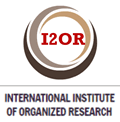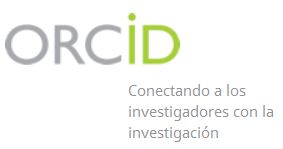Neuropsychological characterization of patients with mild and moderate frontal cranioencephalic trauma
Keywords:
craniocerebral trauma, neuropsychological tests, multivariate analysisAbstract
Introduction: frontal cranioencephalic injuries are the leading cause of death and disability in patients under 45 years of age; The neuropsychological ones, for which a particular evaluation is needed, are their most frequent sequels. Objective: to describe the neuropsychological characteristics of 42 patients with slight and moderate frontal head trauma. Method: a descriptive cross-sectional epidemiological study was carried out with a sample of 42 patients with slight and moderate frontal cranioencephalic trauma who were admitted to “Arnaldo Milián Castro” Neurosurgery Room between January and December 2015. Results: high frequency of alterations of attention, as well as of memory (both constitute a basic process for the adaptation of the human being to the world that surrounds him); the deterioration of memory by different mechanisms causes important functional losses, particularly anterograde amnesia, and difficulty to control of thought and slowing processes, as well as alterations to regulate the emotional response and, in all cases, it will be found some level of alteration of language, associated with negative emotional states. Conclusions: in the studied variables, the presence of different levels of alteration in the attention, in memory, in thinking and in language and of negative emotional states combined in the same patient became them in relevant elements to be present in the evaluation of patients.Downloads
References
1. Leibson CL, Brown AW, Ransom JE, Diehl N, Perkins PK, Mandrekar J, et al. Incidence of traumatic brain injury across the full disease spectrum: a population-based medical record review study. Epidemiology [Internet]. 2011 [citado 6 Ene 2017];22(6):836-44. Disponible en: https://www.ncbi.nlm.nih.gov/pubmed/21968774
2. Theadom A, Barker-Collo S, Feigin VL, Starkey NJ, Jones K, Jones A, et al. The spectrum captured: a methodological approach to studying incidence and outcomes of traumatic brain injury on a population level. Neuroepidemiology [Internet]. 2012 [citado 6 Ene 2017];38(1):18-29. Disponible en: https://www.ncbi.nlm.nih.gov/pubmed/22179412
3. Daroff RB, Femchel GM, Jakovic J.Trauma of the nervous sistem craniocerebral trauma. En: Daroff RB, Femchel GM, Jakovic J, Mazziotta JC. Neurology in clinical practice. 6th ed. San Francisco: Elsevier Health Sciences; 2012. p. 942-956.
4. Corrigan JD, Hammond FM. Traumatic brain injury as a chronic health condition. Arch Phys Med Rehabil [Internet]. 2013 [citado 6 Ene 2017];94(6):1199-201. Disponible en: https://www.ncbi.nlm.nih.gov/pubmed/23402722
5. Ahman S, Saveman BI, Styrke J, Björnstig U, Stålnacke BM. Long-term follow-up of patients with mild traumatic brain injury: a mixed-method study. J Rehabil Med [Internet]. 2013 [citado 6 Ene 2017];45(8):758-64. Disponible en: https://www.ncbi.nlm.nih.gov/pubmed/24002311
6. Amado Donéstevez de Mendaro A, Blanco González R, Camacho García L. Traumatismo craneoencefálico. Disfunción cognitiva. Acta Méd Centro [Internet]. 2012 [citado 6 Ene 2017];6(1):10-15. Disponible en: http://www.revactamedicacentro.sld.cu/index.php/amc/article/view/666/789
7. Amado Donéstevez de Mendaro AR, Blanco González R, Nepomuceno Padilla NL, Camacho García L. Traumatismo craneoencefálico frontal y su evaluación neuropsicológica. Medicentro Electrón [Internet]. 2011 [citado 4 Mar 2016];15(1):53-57. Disponible en: http://www.medicentro.sld.cu/index.php/medicentro/article/viewFile/74/103
8. Leon-Carrion J, Leon-Dominguez U, Pollonini L, Wu MH, Frye RE, Dominguez-Morales MR, et al. Synchronization between the anterior and posterior cortex determines consciousness level in patients with traumatic brain injury (TBI). Brain Res [Internet]. 2012 [citado 6 Ene 2017];1476:22-30. Disponible en: https://www.ncbi.nlm.nih.gov/pubmed/22534483
9. Thompson HJ, Dikmen S, Temkin N. Prevalence of comorbidity and its association with traumatic brain injury and outcomes in older adults. Res Gerontol Nurs [Internet]. 2015 [citado 6 Ene 2017];5(1):17-24. Disponible en: https://www.ncbi.nlm.nih.gov/pubmed/22165997
10. Leitgeb J, Mauritz W, Brazinova A, Majdan M, Janciak I, Wilbacher I, et al. Glasgow Coma Scale score at intensive care unit discharge predicts the 1-year outcome of patients with severe traumatic brain injury. Eur J Trauma Emerg Surg [Internet]. 2013 [citado 6 Ene 2017];39(3):285-92. Disponible en: https://www.ncbi.nlm.nih.gov/pubmed/23762202
11. Leopold A, Krueger F, Dal Monte O, Pardini M, Pulaski SJ, Solomon J, et al. Damage to the left ventromedial prefrontal cortex impacts affective theory of mind. Soc Cogn Affect Neurosci [Internet]. 2012 [citado 6 Ene 2017];7(8):871-80. Disponible en: https://www.ncbi.nlm.nih.gov/pubmed/22021651
12. Ramos-Zúñiga R, González-de la Torre M, Jiménez-Maldonado M, Villaseñor- Cabrera T, Bañuelos-Acosta R, Aguirre-Portillo L, et al. Postconcussion syndrome and mild head injury: the role of early diagnosis using neuropsychological Test and Functional Magnetic Resonance-Spectroscopy. World Neurosurg [Internet]. 2014 [citado 6 Ene 2017];8(5):828-835. Disponible en: http://www.sciencedirect.com/science/article/pii/S1878875013011170
13. Fraga Maia H, Dourado I, Fernández RCP, Werneck GL. Factores asociados a la incapacidad funcional global luego de transcurrido un año despues del traumatismo craneoencefalico. Salud Colect [Internet]. 2013 [citado 6 Ene 2017];9(3):335-52. Disponible en: http://www.scielo.org.ar/pdf/sc/v9n3/v9n3a05.pdf
14. Rostami E, Davidsson J, Ng KC, Lu J, Gyorgy A, Walker J, et al. A model for mild traumatic brain injury that induces limited transient memory impairment and increased levels of axon related serum biomarkers. Front Neurol [Internet]. 2012 [citado 6 Ene 2017];3:115. Disponible en: https://www.ncbi.nlm.nih.gov/pmc/articles/PMC3401945/
15. Kristiansson H, Nissborg E, Bartek J Jr, Andresen M, Reinstrup P, Romner B. Measuring elevated intracranial pressure through noninvasive methods: a review of the literature. J Neurosurg Anesthesiol [Internet]. 2013 [citado 6 Ene 2017];25(4):372-85. Disponible en: https://www.ncbi.nlm.nih.gov/pubmed/23715045
16. Su SH, Wang F, Hai J, Liu NT, Yu F, Wu YF, et al. The effects of intracranial pressure monitoring in patients with traumatic brain injury. PloS One [Internet]. 2014 [citado 6 Ene 2017];9(2):e87432. Disponible en: https://www.ncbi.nlm.nih.gov/pubmedhealth/PMH0064063/
17. Lee Sy, Kim SS, Kim CH, Park SW, Park JH, Yeo M. Prediction of outcome after traumatic brain injury using clinical and neuroimaging variables. J Clin Neurol [Internet]. 2012 [citado 6 Ene 2017];8(3):224-9. Disponible en: https://www.ncbi.nlm.nih.gov/pmc/articles/PMC3469804/
18. Pavawalla SP, Schmitter-Edgecombe M, Smith RE. Prospective memory after moderate-to-severe traumatic brain injury: multinomial modeling approach. Neuropsychology [Internet]. 2012 [citado 6 Ene 2017];26(1):91-101. Disponible en: https://www.ncbi.nlm.nih.gov/pubmed/21988127
19. Lovstad M, Funderud I, Endestad T, Due-Tonnessen P, Meling TR, Lindgren M, et al. Executive functions after orbital or lateral prefrontal lesions: neuropsychological profelis and self–reported executive functions in everyday living. Brain Inj [Internet]. 2012 [citado 6 Ene 2017];26(13-14):1586-98. Disponible en: https://www.ncbi.nlm.nih.gov/pubmed/22731818
20. Cicerone KD. Participation after multidisciplinary rehabilitation for moderate to severe traumatic brain injury in adults. Arch Phys Med Rehabil [Internet]. 2013 [citado 6 Ene 2017];94(7):1421-3. Disponible en: https://www.ncbi.nlm.nih.gov/pubmed/23800407
21. Téllez-Vargas J. Depresión y trauma craneoencefálico. Avances Psiquiatr Biol. 2005; 6:86-100.
22. Gould KR, Ponsford JL, Spitz G. Assosiation between cognitive impairments and anxiety desorders following traumatic brain injury. J Clin Exp Neuropsychol [Internet]. 2014 [citado 6 Ene 2017];36(1): 1-14. Disponible en: https://www.ncbi.nlm.nih.gov/pubmed/24303952
23. Stuss DT. Functions of the frontal lobes: relation to executive functions. J Int Neuropsychol Soc [Internet]. 2011 [citado 6 Ene 2017];17(5):759-65. Disponible en: https://www.ncbi.nlm.nih.gov/pubmed/21729406
24. Mendes Sambalundo A, Herrera Jiménez LF, Angulo Gallo L, Guerra Morales V. Exploración neuropsicológica y manifestaciones de ansiedad y depresión en pacientes con traumatismo cráneo-encefálico. Huambo, 2012. Rev Hosp Psiquiátr La Habana [Internet]. 2015 [citado 6 Ene 2017];12(2):[aprox. 4 p.]. Disponible en: http://www.revistahph.sld.cu/2015/Nro%202/exploracion%20neuropsicologica.html
How to Cite
Issue
Section
License
Authors who have publications with this journal agree to the following terms:
- Authors will retain their copyright and assign to the journal the right of first publication of their work, which will simultaneously be subject to a Creative Commons License / Attribution-Noncommercial 4.0 International (CC BY-NC 4.0) that allows third parties to share the work as long as its author and first publication in this journal are indicated.
- Authors may adopt other non-exclusive license agreements for distribution of the published version of the work (e.g., depositing it in an institutional repository or publishing it in a monographic volume) as long as the initial publication in this journal is indicated.
- Authors are allowed and encouraged to disseminate their work through the Internet (e.g., in institutional telematic archives or on their web page) before and during the submission process, which can produce interesting exchanges and increase citations of the published work. (See The effect of open access).





 december 15 2025
december 15 2025


